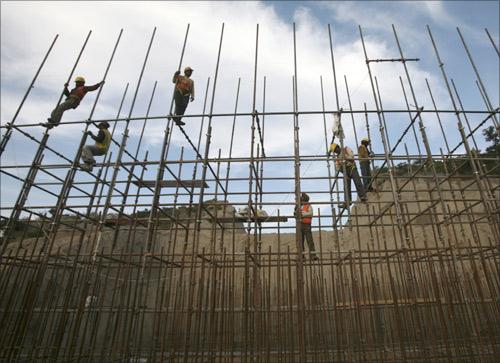
Rising CAD, low growth & inflation may spark off an economic crisis in India, says Ajay Chhibber.
The word "stagflation" is being used to describe India's macroeconomic predicament.
While India is not stagnant, its growth rate has steadily declined, and with persistent inflation, the policy makers were already facing difficult choices.
Now, a surprisingly high external deficit suggests a perfect storm could be brewing.
India's current account balance recorded a historical deficit of 4.2 per cent of the gross domestic product (GDP) in financial year 2011-12.
...
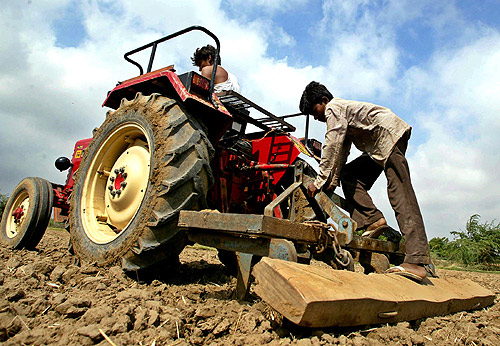
Recent quarters have seen a further deterioration. For the first three quarters of 2012-13, the deficit stood at 5.4 per cent, and in the last quarter, it reached a record high of 6.7 per cent of GDP.
The history of financial and economic crises from Latin America in the 1980s to Asia in the 1990s, and plenty of industrialised countries in between, clearly shows that large and persistent current account deficits (CADs) can precipitate financial and, subsequently, economic disasters.
A CAD of over five per cent of GDP is considered a red line among policy makers and financial markets.
India was stuck at GDP's "Hindu rate of growth" of three per cent for almost three decades after Independence.
Click NEXT to reading more...

In the 1980s and the 1990s, the growth rate stepped up to five to six per cent on average, and then soared to eight to nine per cent from 2002-2007.
India, some experts said, was on the "golden turnpike of growth".
With the global financial crisis, growth fell to around six per cent in 2008-09, but when India recovered quickly after that with growth picking up to nine per cent in 2009-10, it seemed the country truly was back on a "golden growth turnpike".
But since 2009-10, the growth rate has shown a persistent decline.
...
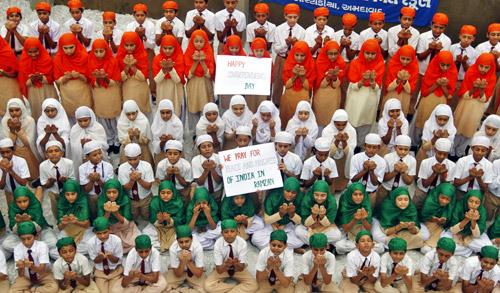
While some thought we would step down to the five to six per cent growth rate of the 1990s, we now run the danger of going further back to the so-called "Hindu growth rate".
A large CAD with a decade-long low GDP growth add to the concern that if these trends are not quickly addressed, India runs huge risks.
Since mid-2012, foreign inflows have financed CAD, but if growth were not to pick up, they could dry up and even reverse - causing a sharp and destabilising slide in the rupee.
...
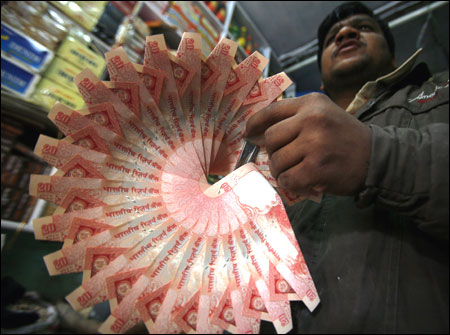
Lower growth and high inflation are ultimately linked to the high fiscal deficits for the last three years. But that is not the complete story.
The lack of competitive exchange rate and structural and administrative reforms have contributed heavily, making manufacturing uncompetitive.
The country's private investment rate as percentage of GDP has fallen from 28.1 in 2007-08 to 24.9 in 2011-12.
When the rupee fell to Rs 58 to the US dollar last June, exports looked up, but as the rupee again appreciated back to Rs 55, manufactured imports - largely consumer goods, not capital goods - have soared.
...
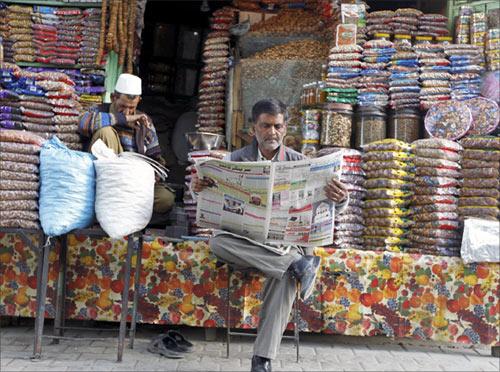
There is a misguided debate in India on the causes of inflation - is it structural or demand-induced?
As the famous Nobel Prize-winning economist Milton Friedman observed, the immediate cause of inflation is always excess demand.
What causes excess demand needs to be looked into and could be triggered by a combination of macro and structural factors. But the persistence of inflation suggests an accommodating macro policy, even if the trigger is structural.
For example, public distribution system (PDS) policies can lead to inflation, but the mechanism needs better understanding.
...
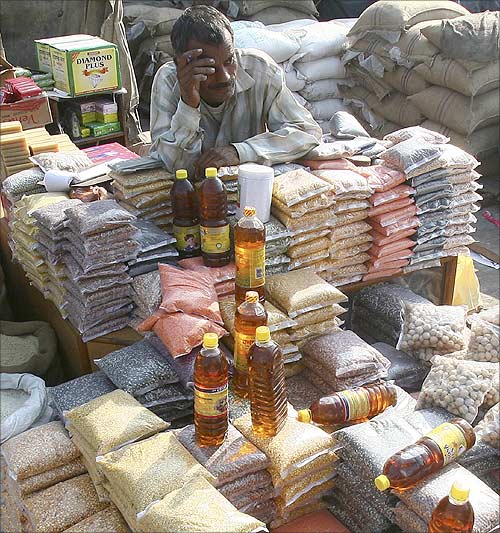
Higher procurement prices increase the cost of procuring grain and reduce the amount of grain available in the market - increasing grain prices.
If the procured grain is not released and stocks accumulate, it increases the food subsidy Bill in the Budget - the bulk of PDS costs are owing to storage and transport of grain.
This must then be financed by increasing public debt or inflationary financing.
Higher petrol prices owing to reduction of fuel subsides, similarly, are considered inflationary, because they increase the costs of transportation and production.
...
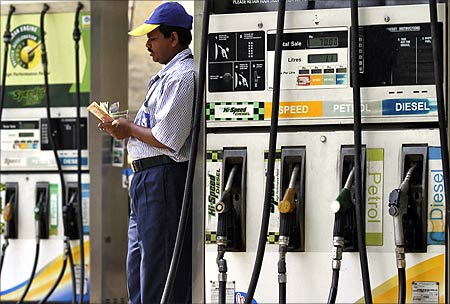
But it has been shown that higher petrol prices in the short term can lead to higher overall prices, but can lower inflation in the medium term if fiscal deficits are thereby reduced.
Direct cash payments to poor in lieu of lower petrol prices - with deregulation of petrol prices - can reduce the deficit, mitigate the pain to the poor, and lower inflation.
Some have suggested that the heavy expenditure on welfare schemes, such as MGNREGA, causes inflation because it increases the purchasing power of rural poor and thus, food demand in rural areas. But only a small part of this expenditure actually reaches the poor.
Much is cornered by non-poor. And even the part that "trickles down" to the poor cannot be the cause of our macroeconomic difficulties.
...
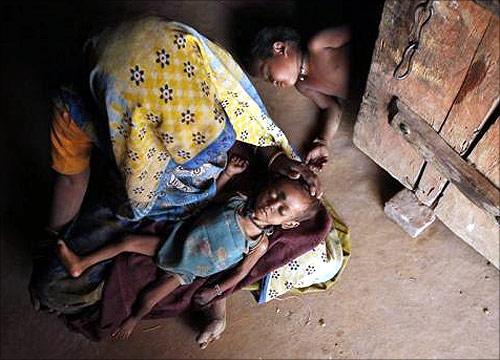
We should not blame the poor for higher inflation when they consume more food and overcome malnutrition.
Instead, we should ask why food prices are rising when we have had a period of good agricultural growth over the last three years.
The answer is that much of the increased production has been procured to increase food stocks to a record level, while food prices rise and the food subsidy Bill soars.
Bringing fiscal and trade deficits under control will require not only smart coordination between the government and the monetary authority, but also a multi-pronged strategy: further reductions in the fiscal deficit, a competitive exchange rate, and attracting more foreign direct investment.
...
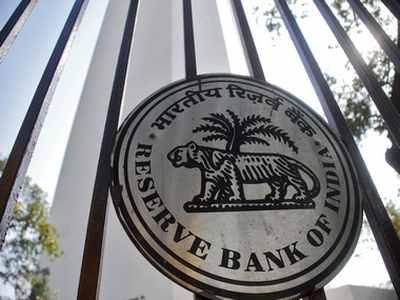
Other large emerging countries, such as China and Indonesia, have excelled in these aspects through continued administrative, financial and structural reforms.
There is a coordinated chorus of business and policy makers looking at the Reserve Bank of India to lower interest rates to revive growth.
But if increased demand spills over into even higher import Bills and manufacturing does not revive, it could set us down a dangerous path of even larger CADs.
The finance minister has taken steps to improve the fiscal situation and promote economic growth. But with the elections looming and coalition politics again raising demands, India faces a tough period ahead.
Serious structural reforms combined with fiscal consolidation are needed, but these may have to wait till after the elections. To avoid the perfect storm, India must act now.
The author is UN Assistant Secretary-General, UNDP Assistant Administrator, and Director of the UNDP's Regional Bureau for Asia and the Pacific.